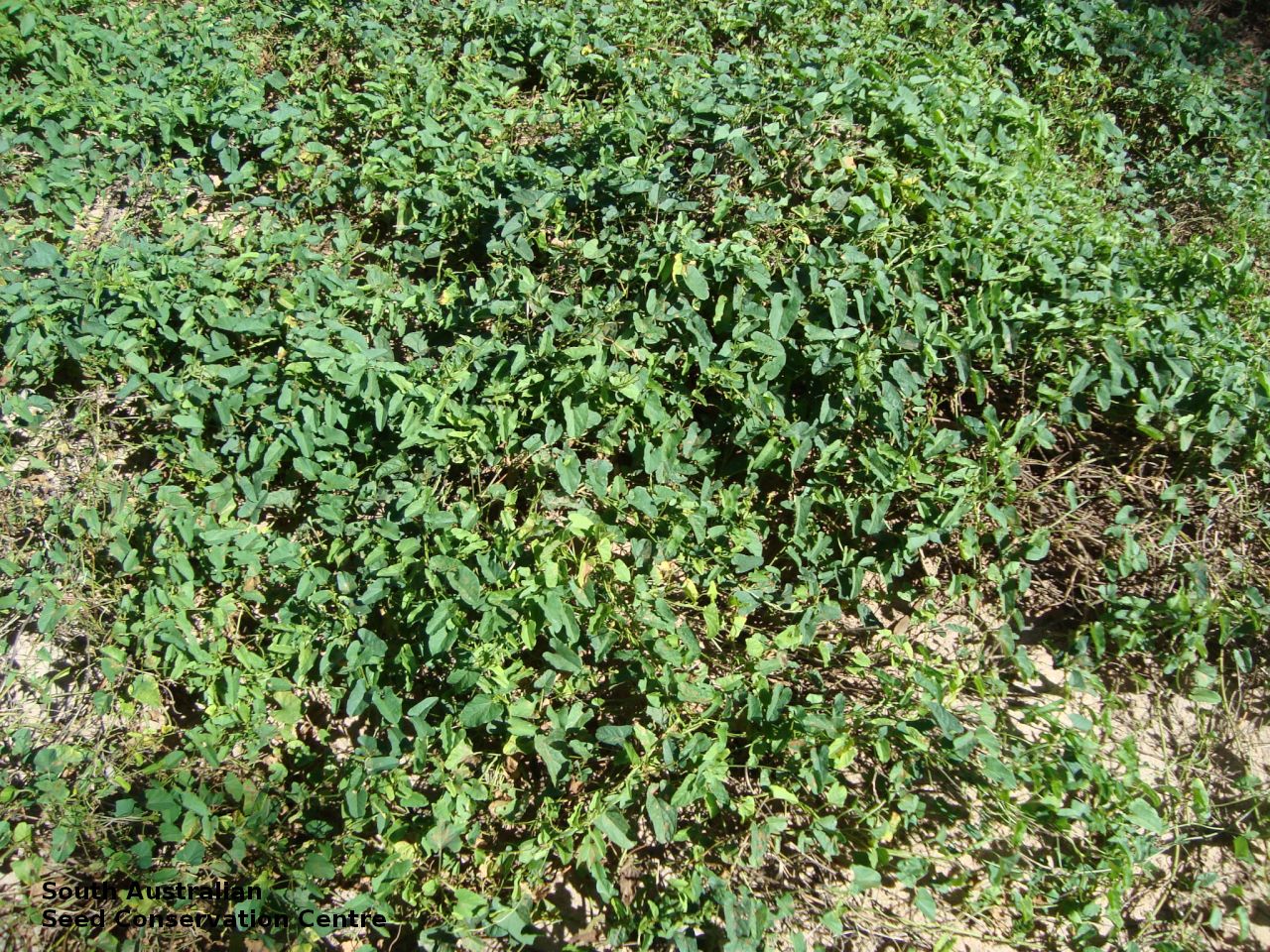
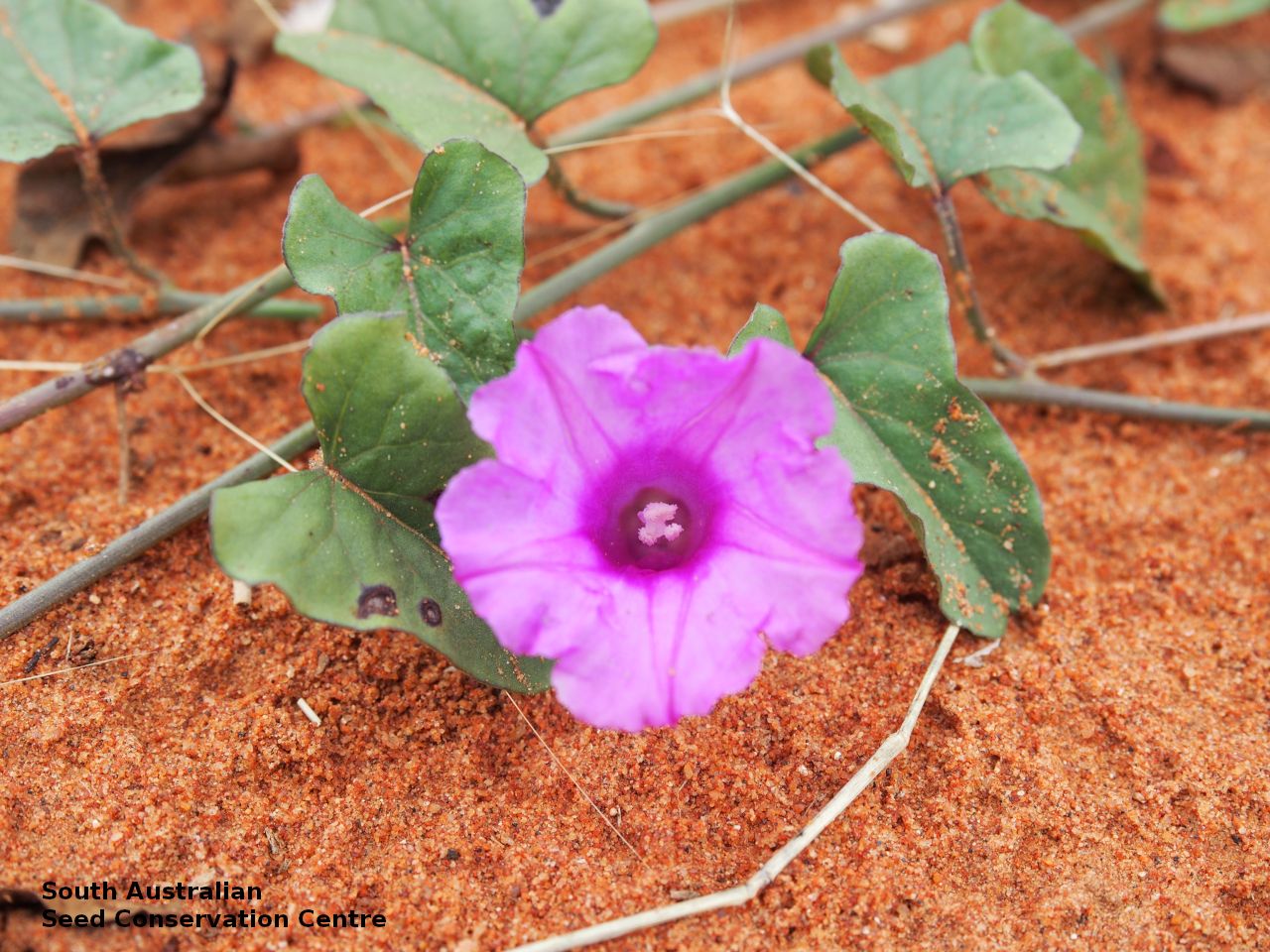
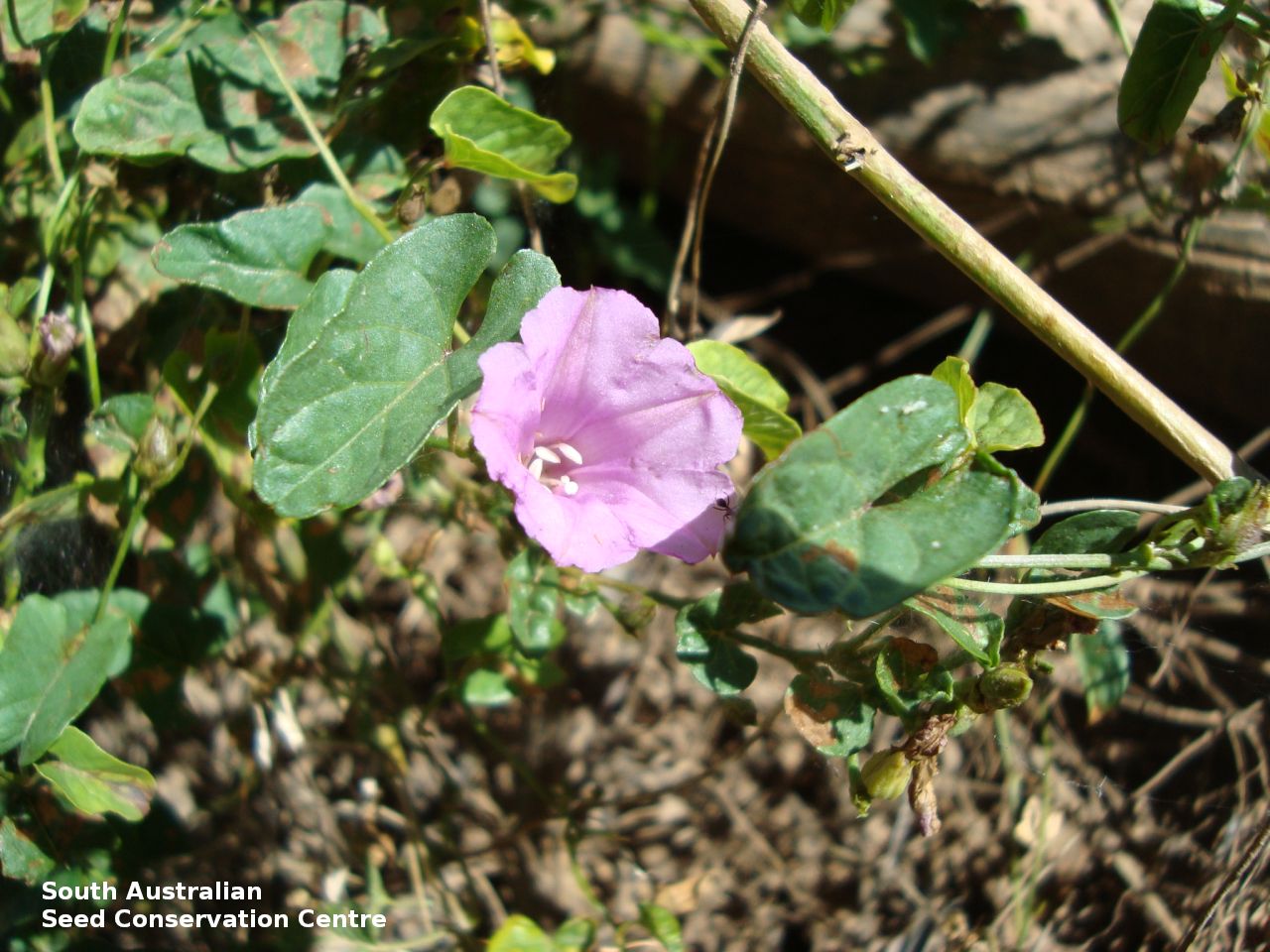
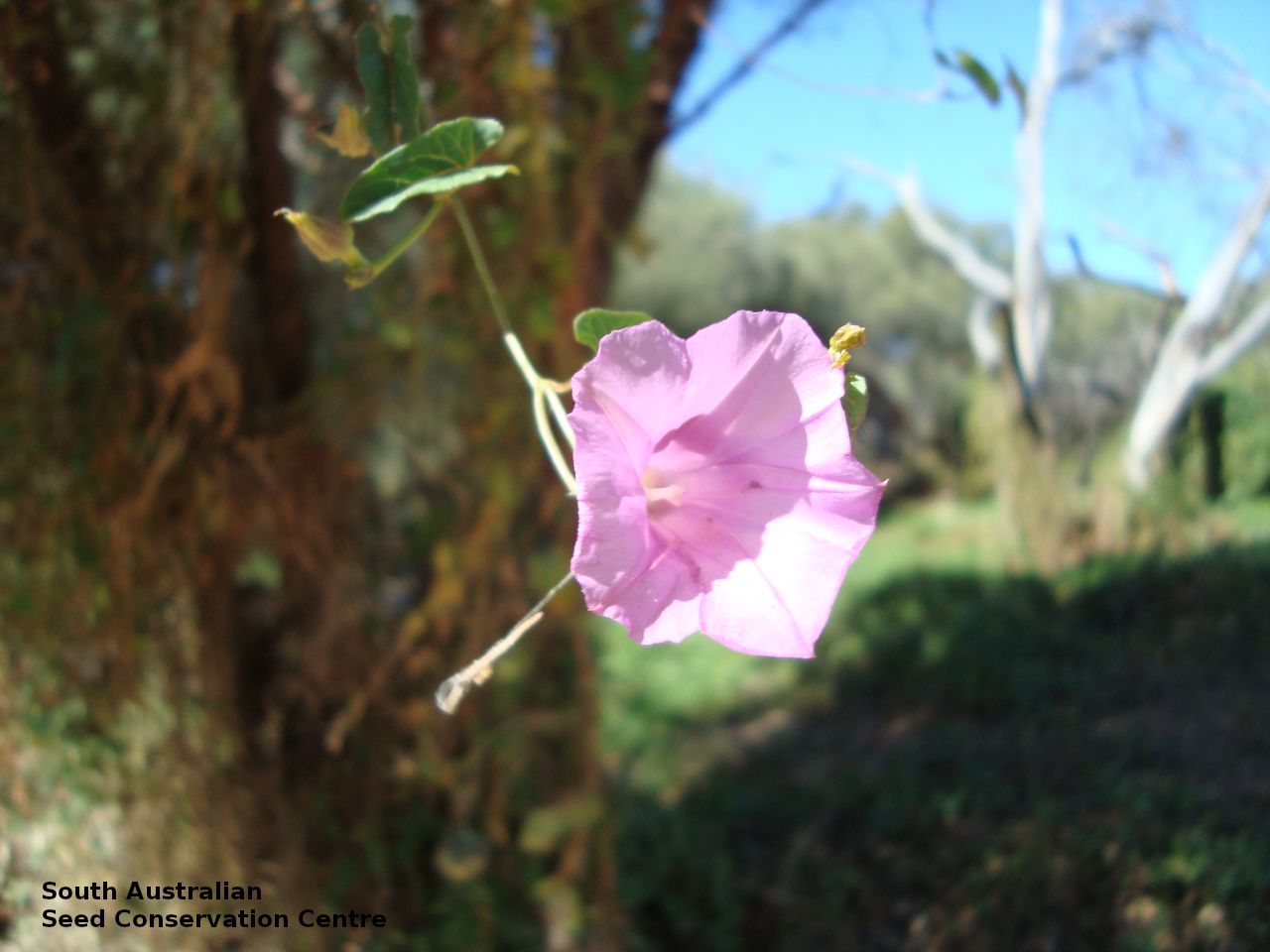
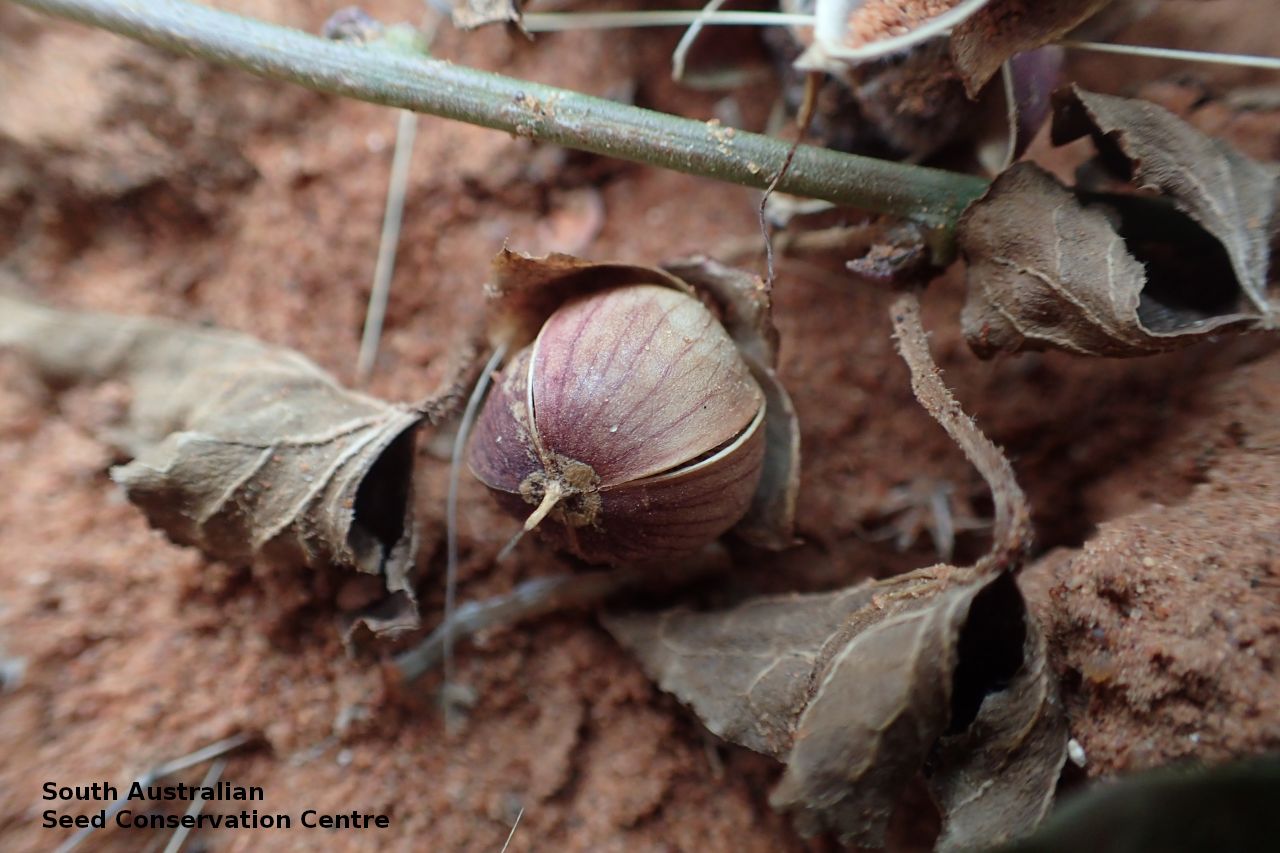
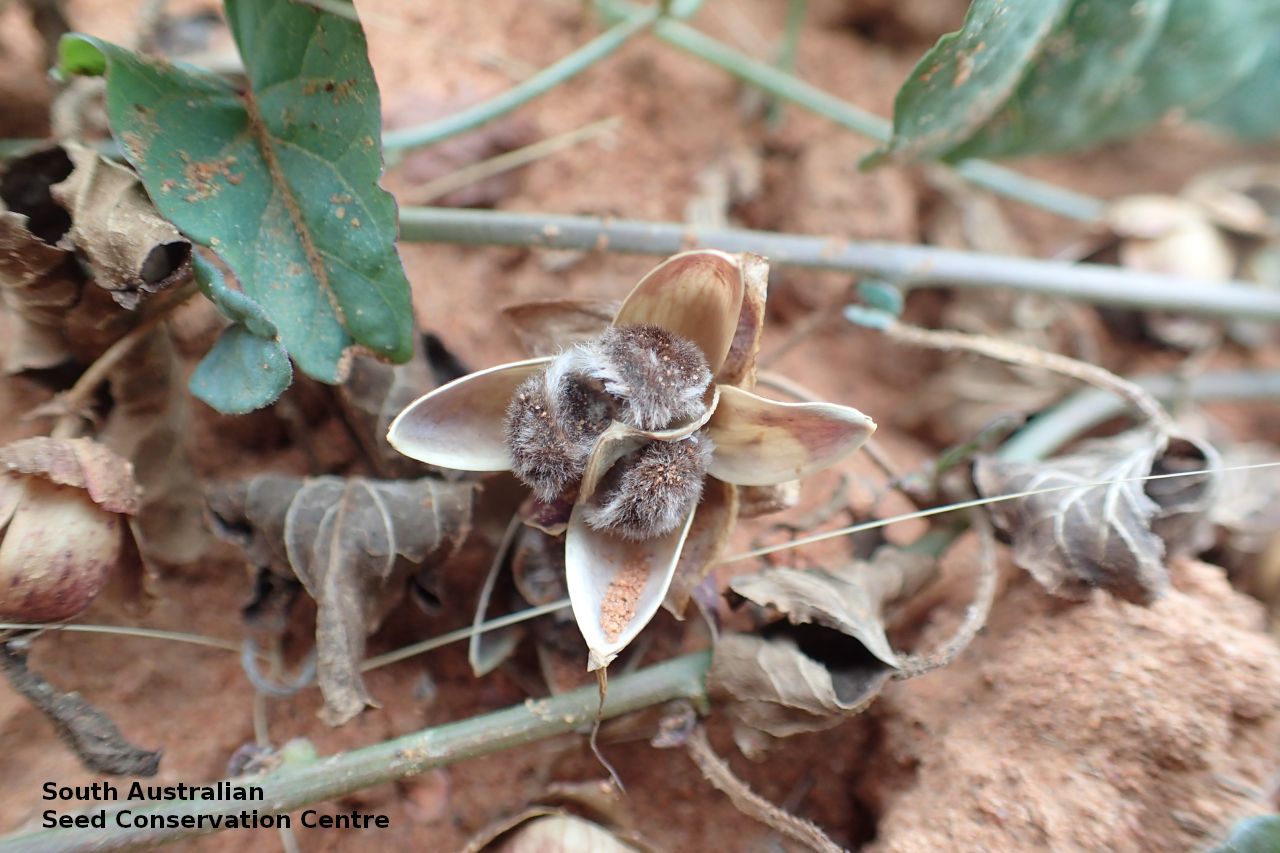
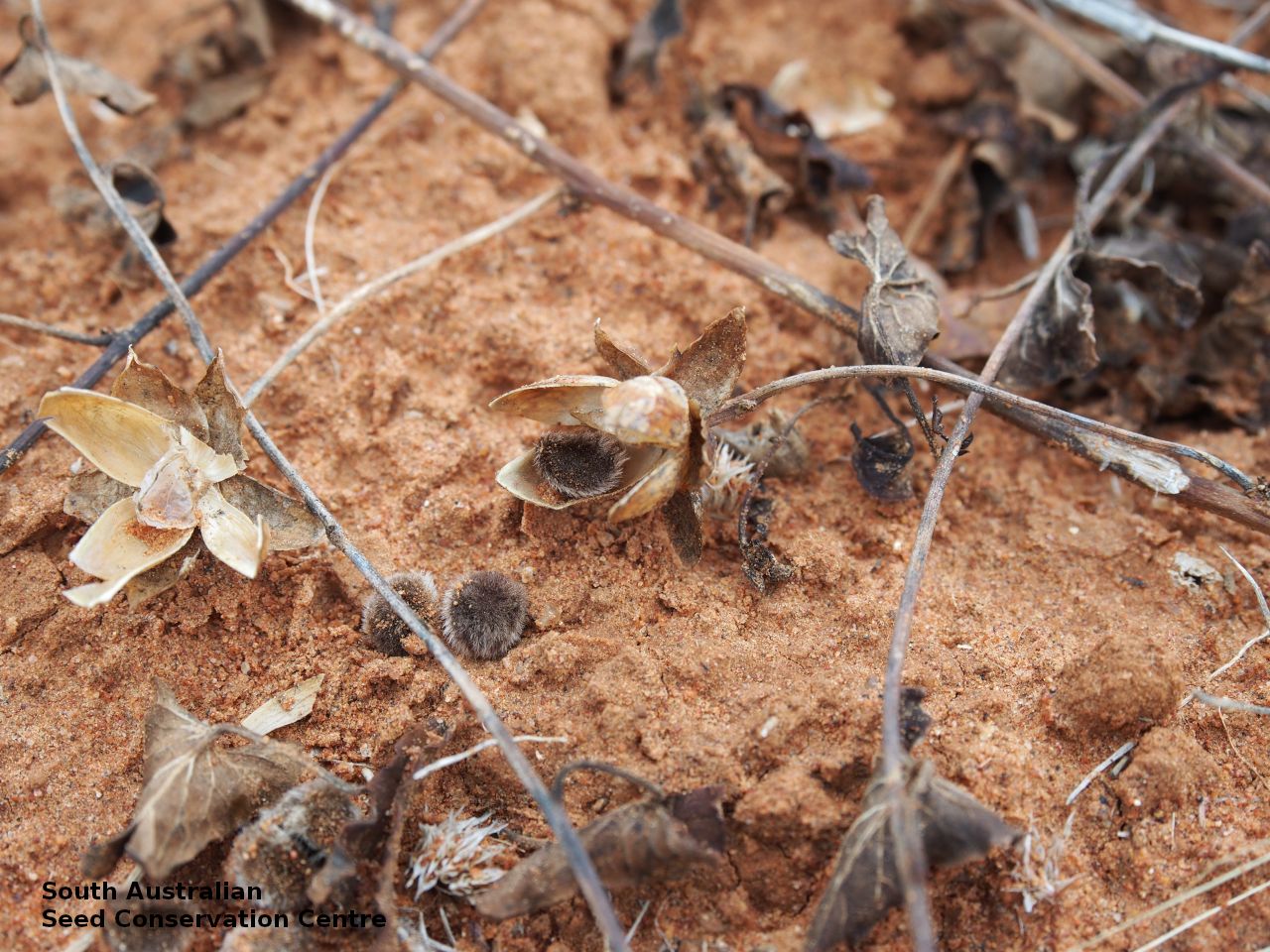
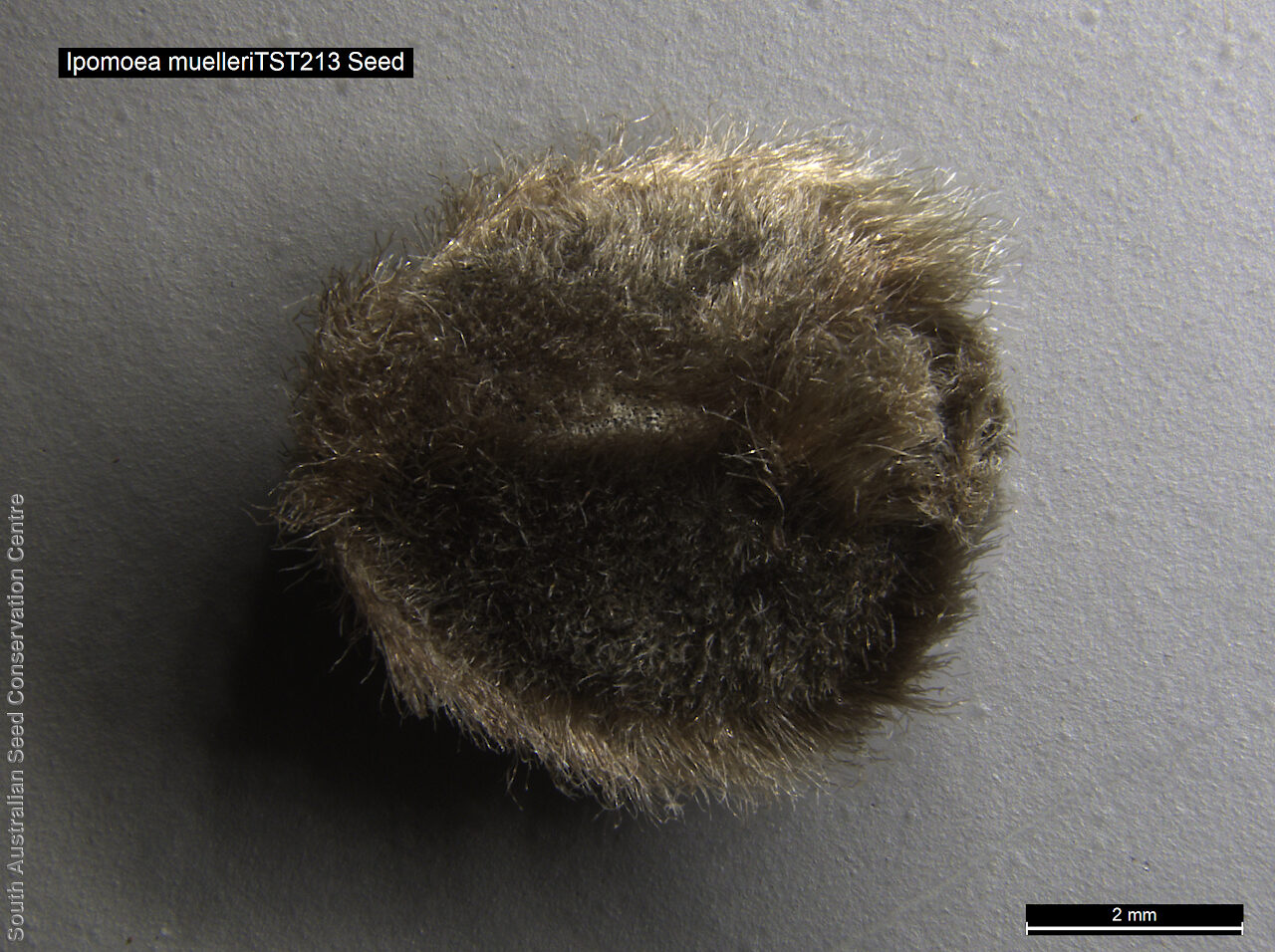
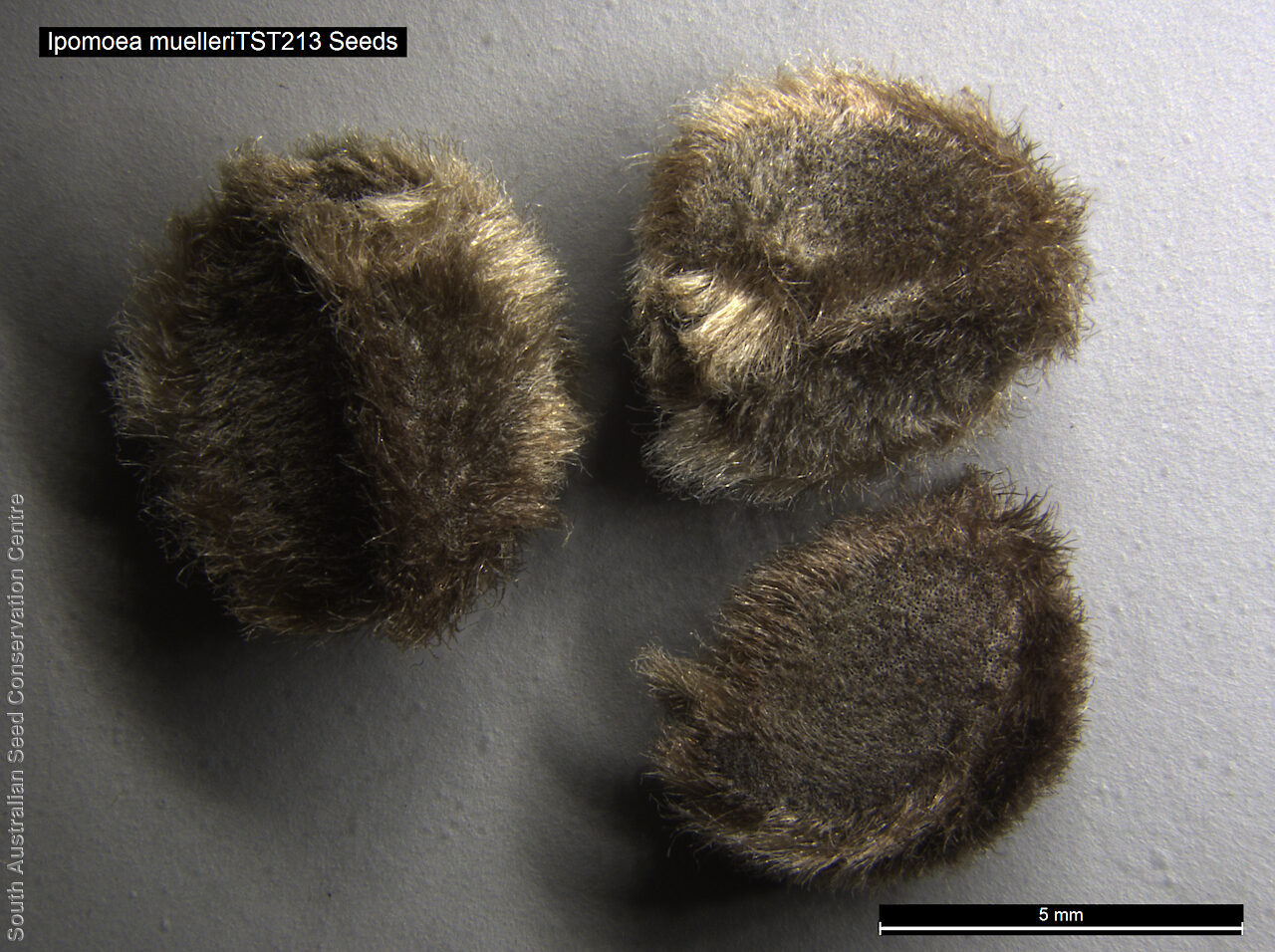


Botanical art
Common names
Native Morning-glory
Etymology
Ipomoea from the Greek 'ips' meaning a worm (mistakenly supposed by Linnaeus to mean the bindweed) and 'homoios' meaning like; referring to its twining habit. Muelleri named in honour of Ferdinand von Mueller (1825-1896), botanist, plant collector and Government Botanist of Victoria.
Distribution and status
Found in the north-eastern part of South Australia, growing on reddish sands, loams and clay-loams, mostly in Acacia and Eucalyptus open woodland and mixed shrubland. Also found in Western Australia, Northern Territory and Queensland. Native. Common in South Australia. Common in the other states.
Herbarium region: Lake Eyre
AVH map: SA distribution map (external link)
Plant description
Glabrous to sparsely hairy perennial vine with trailing or twining stems. Leaves broadly ovate to triangular, to 8 cm long and 7 cm wide, obtuse, base cordate. Inflorescence in wiry clusters with 1�3 large funnel-shaped, pale rose-purple with a slightly darker throat flowers. Flowers throughout the year. Fruits are dark brown globular capsule to 12 mm diameter, with a persistent style base and splitting longitudinal into 4 valves. Seeds are dark brown to black sectoroid seed to 6 mm long and 5 mm wide, with dense hairs, longer hairs along the margin. Seed embryo type is folded.
Seed collection and propagation
Collect seeds between January and December. Collect capsules that are maturing, turning brown and contain hard seeds inside. Capsules can be opened or unopened and some seed can be collected from the ground under the plant Place the capsules in a tray and leave to dry for one to two weeks. Then rub the capsules gently by hand or with a rubber bung to dislodge the seeds. Use a sieve to separate the unwanted material. Store the seeds with a desiccant such as dried silica beads or dry rice, in an air tight container in a cool and dry place. From one collection, the seed viability was high, at 95%. This species has physical dormancy that needs to be overcome for the seed to germinate (e.g. nicking the seed coat).
| Location | No. of seeds (weight grams) | Number of plants | Date collected | Collection number Collection location | Date stored | % Viability | Storage temperature |
|---|---|---|---|---|---|---|---|
| BGA | 4,500 (245.35 g) | 50+ | 25-Oct-2007 | TST213 Lake Eyre | 19-Sep-2008 | 95% | -18°C |
Number of plants: This is the number of plants from which the seeds were collected.
Collection location: The Herbarium of South Australia's region name.
% Viability: Percentage of filled healthy seeds determined by a cut test or x-ray.